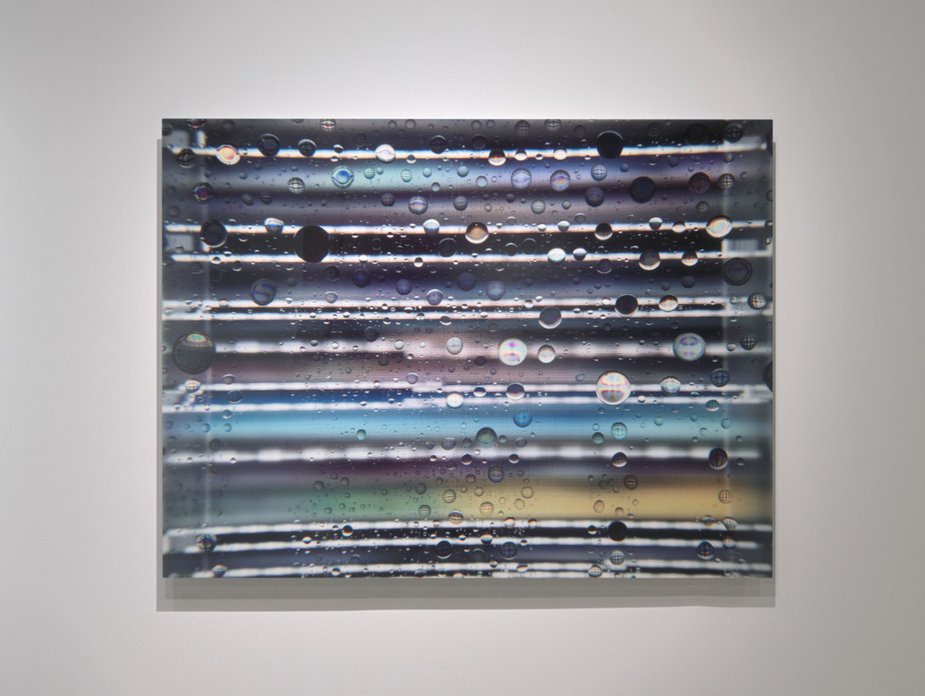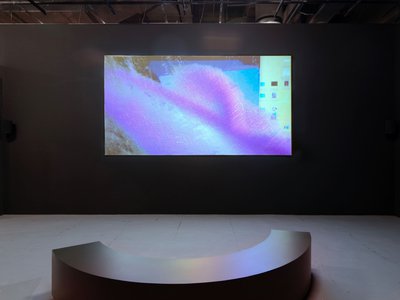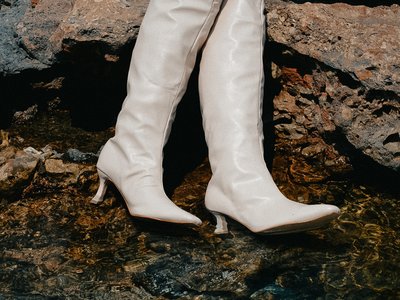Charlotte Cotton:
I remember so distinctly the first exhibition of your Screen Cleaner series, in Los Angeles. It was in Spring 2016, about six months after my book Photography is Magic was published by Aperture and I really kicked myself that I had missed the chance to include your work in the book. I appreciate the way in which you directly take the viewer into the place of infinite visual possibilities when photography, abstraction and experimentation collide. Tell me how this project came about – where you were coming from in terms of your practice to that point.
Valerie Green:
Thank you so much for inviting me to be part of the Experimental Photography exhibition at Tasweer 2021. I like to think of my work existing in a space where the virtual meets the tangible. The Screen Cleaner photographs started in 2013 when I was using a spray to clean my monitor. There was a defining moment when I really became aware of how the droplets of fluid acted like little lenses on the screen – refracting the red, green, and blue light to reveal the full color spectrum. After a great deal of experimentation and play, this mundane action developed into the works that are included in this exhibition.
Charlotte Cotton:
Had you been using digital platforms as materials and space within your work before this?
Valerie Green:
Yes, I had been and have been considering the space of the digital screen in my practice for some time. With my previous body of work entitled Look Up I was playing with the way mobile devices function as both an extension of our reach and a partition to our view. The photographic objects from the Look Up series began with an impulse to adhere screen protector film to the moonroof window of my car. The resulting photos made with my phone’s camera capture one year of the Los Angeles sky from inside my vehicle. These images depict the space in front of, directly on, and beyond the glass. I used hand airbrushing to extend the sky around the frame, allowing it to at once blend in to the photograph and assert itself as a barrier. The multiple framing devices at play in these works simultaneously function as a compression and a decompression of 3-dimensional space, image space, and virtual space.
Charlotte Cotton:
And this gives us – the viewers – really unexpected vantage points. We are simultaneously under, within and confronting this 'virtual' space in which you are working.
Valerie Green:
While Look Up views the world from within the device, Screen Cleaner flips the camera around as if the screen were looking at itself in the mirror while washing its face, something like an intimate macro-selfie!
Charlotte Cotton:
One of the primary materials you use is the screens of your digital devices – the 'tools' of your photographic practice and daily life. You deploy the familiar, default devices that many of us use all the time and, for me, this is a central part of the meaning and pleasure of your photographs. It creates an entry point into the work and, with that, there’s an acknowledgement of image-making being a collective and ubiquitous activity – an active choice, I suspect, on your part. Can you tell me about the process of making the Screen Cleaner works and what you were selecting out of the myriad of possibilities to capture images within that process.
Valerie Green:
I was cleaning fingerprints off of my monitor when I realized the visual potential of liquid on a digital screen. I started to really pay attention to the moments when my phone would get wet and how that liquid would interact with the image below. The Screen Cleaner series is made by photographing the screens of my various devices. They begin simply with the liquid sprayed on to a solid grey image – all of the color coming from within the screen itself. After a cyclical process of spraying, photographing, enlarging, making screen shots, spraying, printing, rephotographing and so on... the images take their final form as dye sublimation prints directly on aluminum, without the interference of photographic paper. The images remain on the surface.


